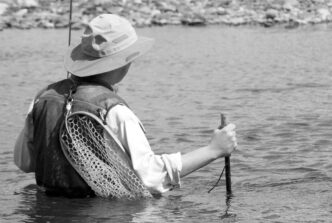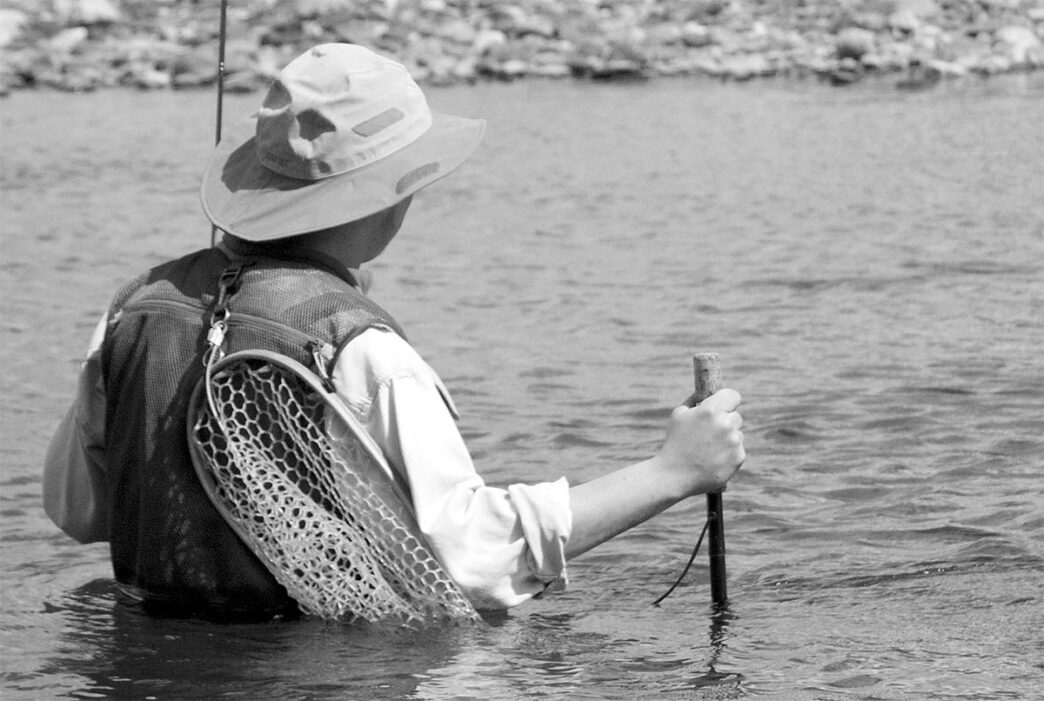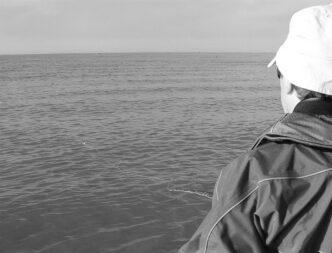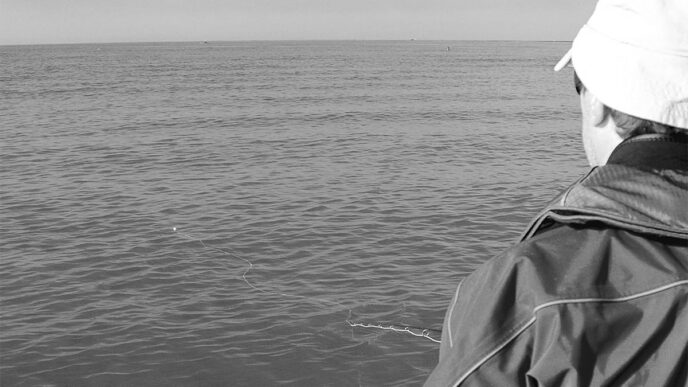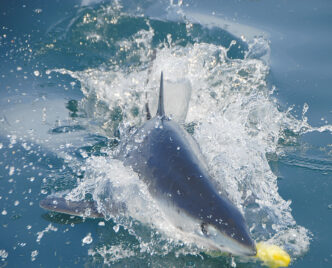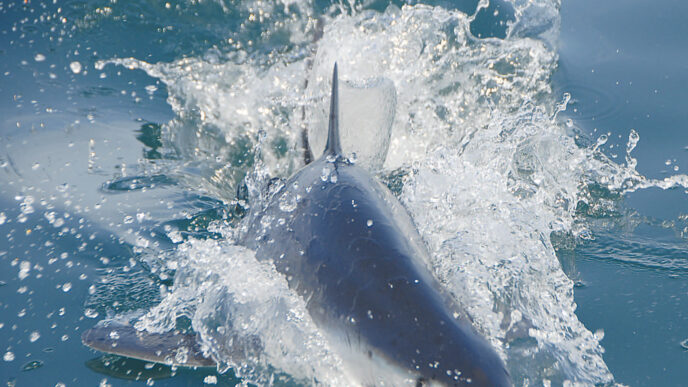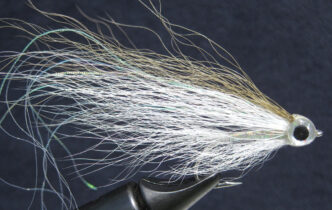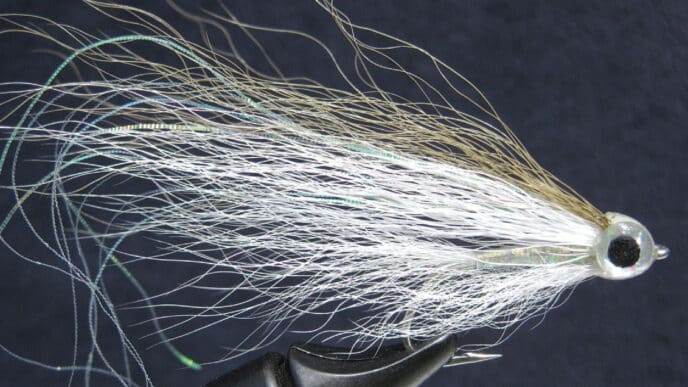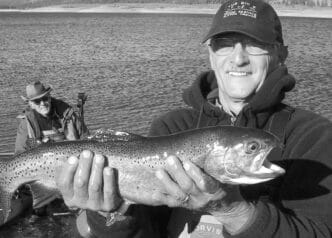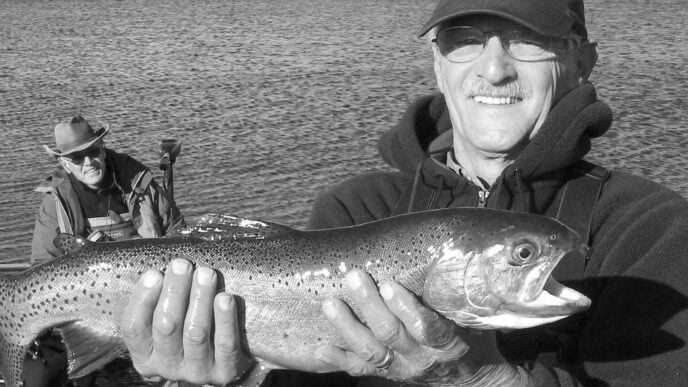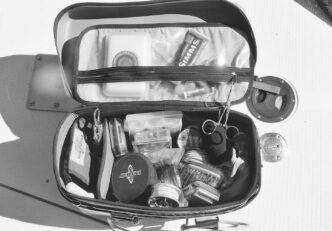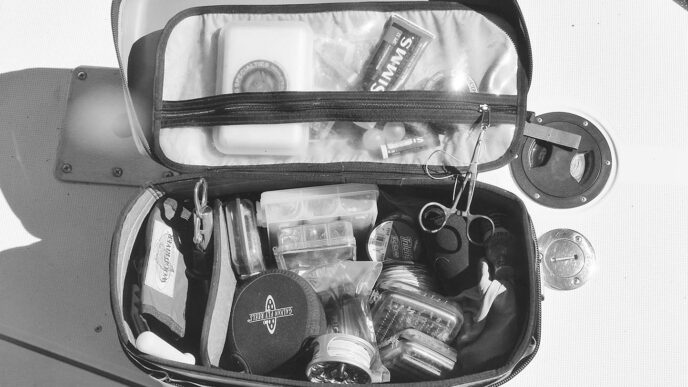We’ve all done it — gotten in a little over our heads while wading. Of course, most people think they know how to wade, and that’s fine. People also know how to drive, spell, and throw textbook casts every time. Unless you can actually walk on water, immersing yourself in a few principles of successful wading could keep you dry and safe when you need it most.
I always think of that scene from the movie A River Runs Through It. Brad Pitt spots a perfect pocket in the middle of the stream where there must be a fish. He shadow casts his Bunyan Bug right into the bull’s eye, hooks the fish, and takes a wet ride down the rapids before landing his trophy. You could say that this little drama went swimmingly well for him.
Many anglers do some version of the same thing, without taking the plunge, of course. They spy a deep hole in a questionable part of the stream that other anglers might not recognize as good holding water. They know their limits, however, and decide that wading over to it is not worth the risk. Never let anyone overrule your own good judgment about where not to wade. No one but a Hollywood stuntman with his insurance paid in full should ever consider taking a wet ride in order to catch a fish. Here’s advice, both obvious and hard-won, on how best to approach the task of wading a stream.
The Right Staff
People with only one oar in the water tend to go in circles. Anglers with only one foot on the bottom tend to go swimming. You cannot keep two points of contact with the stream bottom without a wading staff. There are those who would argue this point, but they are eventually, ahem, all wet. Like a belt, a wading staff is an integral tool and essential component of safe wading. Do not get in moving water without one.
Before lifting a foot to take a step, make sure your staff is firmly planted. Staffs are also useful for probing the depth of opaque water before you commit to it, not to mention for tapping on logs in rattlesnake country before stepping into that void on the other side.
Finding the right staff is important, too. Taller waders struggle with staffs that are too short, and vice versa. Some people prefer floating staffs, others staffs that sink. Good homegrown alternatives include anything from old broomsticks to garage-sale ski poles. Whichever your preference, make sure you can attach a lanyard to it. Wading staffs that wash away in the current put wading anglers in the sometimes precarious position of having to swim back to shore.
Where to tie the lanyard is another item of personal choice. Some anglers tie or hook it to their wading belts. Others connect them to the D ring on the back of their vests or chest packs. You don’t want a lanyard too short, or you will eventually pull off whatever you’ve connected it to. If it’s too long, the staff becomes difficult to grab when you need it. You want the lanyard to come tight just as your arm is fully extended. A fly shop is a great place to find a commercial staff, but for me, even the best store-bought pole also involves a trip to the hardware store.
Store-bought staffs usually come with lanyards, but I never leave them as-is. I purchase some kind of clip to hook it to myself and a short length of bungee cord. The clip makes it much easier to connect the lanyard to a D ring and is more reliable than tying knots. I incorporate the bungee into the lanyard because it adds a bit of stretch. This keeps the lanyard from tugging when you extend it and even possibly pulling off the D ring. The stretch also adds a level of comfort and will last for years.
Collapsible staffs are fussier than noncollapsible staffs, due to all the moving parts. But if you want to pack small, they are hard to beat. Dressing the joints where the pieces fit together with paraffin wax keeps them from sticking. I’ve tried using those telescoping trekking polls, but don’t waste your money. They don’t hold up to putting your full weight on them.
Getting a Grip
Whatever your choice of wading staff, you were born with the other two ways to contact the streambed, but how you’re shod makes no small difference. Not many fly anglers wear boot-foot waders anymore, and this is generally a good thing. Wading boots designed to slip over waders provide much better fit and footing. Some of us pine for the days when felt soles allowed solid footing on slippery rocks. But since they were found to transport of invasive species such as mud snails that damage fisheries, change was inevitable.
These days, there are all manner of “sticky” rubber soles being used on wading boots, but I have found their performance to be underwhelming. You can buy carbide studs that improve your footing on slippery rocks. A package of these will set you back about $30. You can also head back to the hardware store and buy sheet metal screws. Screw these into the bottom of your rubber soles with a touch of Goop glue. They provide great footing and will last a surprisingly long time. Replacing them is dirt cheap.
Do the Low-Down Shuffle
The way you move about in a stream matters. All streams are unique, but there is a distinct advantage to using your feet in much the same way that a blind person uses a cane. Shuffling, meaning sliding and feeling your way along the bottom with your feet, can communicate a lot of important information about what you cannot see. When fishing a bouldery stream, especially in fast water, plant one foot firmly on the bottom and lean on your wading staff. Use your other foot to feel your way along before committing your full weight to it. What you want to avoid is discovering too late that you’ve stepped from three feet of water into a hole that will float your hat.
When wading, avoid stepping on top of things. Find the lowest places, crevices between rocks, for instance. Anything you can step up on, especially boulders and logs, you may slip off of unexpectedly.
Avoid turning your back to to the current for very long. When you have to turn, turn into the current, instead of away from it. When the current is hitting your rear, you are much more vulnerable to being pushed over. Facing your front or rear into the flow gives it a wide profile to push against, and you can’t overpower a river, at least not for long. Present a side profile to the current, your narrowest silhouette, as often as possible.
In the worst-case scenario, let’s say everything goes wrong and you take the plunge. Do not panic. That blast of cold water into your waders will take your breath away first thing, but it will not kill you. Try to flip over on your back and go downstream feet first. This will give you the best chance of avoiding injury when slamming into things.
Remember that your life is more valuable than even the most cherished fly rod. If you can keep hold of it, great. But if it hinders your ability to stroke toward safe water and find bottom, lose it immediately. You might have a decent chance of retrieving it, but only after retrieving your own life. Once I was fishing the McCloud River and noticed something bright orange drifting toward me underwater. I was able to grab it, and it turned out to be my brother’s strike indicator, miraculously still connected to his rod and reel. The best part of his decision to save his life over his equipment is that he has a lot of years to endure my teasing him about it.
Getting Across
There are several schools of thought on the right way to cross a river. One says to wade upstream and across, against the current. The rationale is that if you need to turn back around, you’ve already identified a safe pathway back. I’ve always preferred to wade straight across, rather than fight an upstream current. I think it’s just as safe, and a bit less work.
When fishing with a friend, two people can cross a stream more safely than one. Two anglers can stand side by side, grasp their staffs with their outer hands, and drape their rod hands over their buddy’s shoulder. Moving across the stream “as one” allows four points of contact with the bottom, instead of two, kind of like the traction difference between driving a motorcycle and a car. Polarized sunglasses can help differentiate shallow from deeper water.
Slow Water: Here There Be Monsters
It’s been a damp lesson for me, learning where I’m most likely to exceed my wading capabilities and go in over the top. Still waters run deep, they say. Beware of the slow water.
I’m one of those tall, long-legged guys who love to thrash around in Northern California’s Pit River. The Pit is not exactly still water, yet parts of it move fairly slowly. The Pit is notorious for tough wading, and since the flows have increased in recent years, it’s only gotten trickier. That doesn’t mean it isn’t a terrific place to fish. It means you need to pay closer attention to where you go in the stream, how you get there, and especially how you get back.
When you survey the area you might want to fish, your eye is naturally drawn to the angry white water. Why anyone would wade out into it might be a great question for a skydiver or bungee jumper. The short answer is that if you are determined “to boldly go where no one has gone before,” you’re apt to find fish that don’t get hammered by other anglers. But this isn’t appropriate for everyone. Long-legged people have a definite advantage, so if you’re vertically challenged, think before following taller people into the fray.
Strangely, many people wade better in the fast water because they are being careful and concentrating on what they’re doing. It’s that soft water right up against the bank that gets you. The reason is because you’ve let down your guard. Just because the water isn’t screaming past does not necessarily mean it’s safe.
How to Float Your Hat
There was a day on Hat Creek when I got into some serious wading trouble in the flat water. You might wonder how that is even possible. The water below Hat 2 Powerhouse is known for being slow and fairly shallow, but not all of it is. Maybe you’ve been in a similar situation:
I had purchased a new, fairly expensive camera back in the 1990s and had taken it to fish the Carbon Bridge area of Hat Creek. I convinced myself that I could just sashay across that peaceful-looking flow. I had done it before, but on that day, I chose a slightly different path. I tucked my new camera inside my waders, grabbed my wading staff, and charged in.
Deeper and deeper I waded until I was overcome by a quizzical feeling that I was about to go over the top of my waders. How could this be? By this time, the deceptively slow water was pushing decisively against my full height. I had only a split second to decide whether my next step would be back the way I had come or toward the far bank. Suddenly, I realized that even turning around in that deep current would be risky, so my next step was toward the far bank, hoping against hope that it would start to shallow up.
It didn’t. The water got deeper. I bobbed up and down with each new step as if I were on a pogo stick. I never went over my head, but each time I bobbed, ice-cold water coursed into my waders. The fancy new camera bobbed and sloshed with me, and there was nothing I could do about it. I had my wading staff in one hand and my fly rod in the other as the frigid water took my breath away.
After maybe six bobs, the water became shallower. I made it to the other side, gasping and cursing, a wetter and I hope wiser man. I collapsed on the bank in utter shock and not a little terror over what I had assumed would be an easy romp across the creek. I ripped the camera out, opened the back, tore out the film (as I said, it was the 1990s), removed the lens and battery, and started shaking as much water out as I could. After a few days of baking on the dash of my pickup truck, it miraculously worked. My wading strategy that day did not.
Strategic wading is not only a matter of common sense, but of absorbing a few rules of the game. Come hell or high water, here’s hoping this little primer will help you keep your head above water and your hat dry. Try not to get in over your head.



